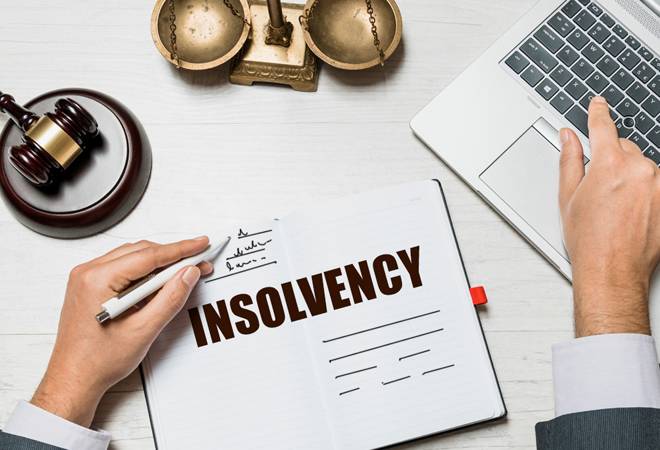This article is written by Nikita Garge who is pursuing a Certificate Course in Insolvency and Bankruptcy Code from Lawsikho.
Table of Contents
Introduction
Insolvency and Bankruptcy Code, 2016 (Hereinafter referred to as the “Code”) was legislated for rehabilitation and reconstruction of a corporate person. It was amended in 2018 vide the Insolvency and Bankruptcy (Amendment) Ordinance, 2018, passed on 6th June, 2018, adding the definition of “Related Party” with respect to an individual under Section 5(24A). Before such an amendment the Code defined the term related party only with respect to a Corporate Debtor (Hereinafter referred to as the “CD”) under Section 5(24).
Who is considered a related party?
The Code under Sections 5(24) and 5(24A) has given an exhaustive definition of the term related party. A related party in terms of a CD is anybody who can act in managerial or directorial capacity. A related party can have a substantial amount of shareholding in the CD or be in a position to make decisions for the CD or its subsidiaries, holdings or associate company. A related party includes within itself the following as per the definition in the code
- Director or partner or key personnel of the CD or any their relative
- Holding, associate or subsidiary of the CD or a subsidiary of a holding company to which the corporate debtor is a subsidiary
- A private or public company in which a director, partner or manager of the CD is a director and holds along with relatives, more than two per cent. of its paid-up share capital
- An LLP where a director, manager, partner of the CD or their relative is a partner
- Any person holding 20% voting share in the CD or the CD holding 20% voting share in any person
- A person on whose instructions a director, manager or partner is accustomed to act
- A person who can control the composition of the board of director
It is pertinent to note that the drafters drafted Section 5(24)(m) to be interpreted widely. It focuses on the interrelationship between two entities. Hence, two entities having more than two directors in common or have an interchange of managerial personnel or participation in policy making processes, will be considered to be related parties of each other.
Does a related party creditor have a right to representation/voting in the meeting of CoC?
The interim resolution professional (Hereinafter referred to as the “IRP”) is required to call for claims from the creditors against the CD. After the collation of such claims the IRP forms the Committee of Creditors (hereinafter referred to as the “CoC”) under Section 21 of the Code. The CoC is completely in control of the CD after the commencement of the CIRP and is responsible to make all the managerial and directorial decisions for the CD.
According to Section 21(2) of the Code, a related party to the CD who is also a financial creditor of the CD will have no right of representation, participation or voting in a meeting of the CoC. This is done in order to protect the rights of the other Financial Creditors and make sure that the decisions made by the CoC do not favour the CD in any way. There have been a few cases where a financial creditor who is a related party has assigned its debt to another Financial Creditor who is not a related party but is a part of the CoC. The court has opposing views regarding this action of related parties .
In the case of Synergies Dooray, Synergy Casting Ltd. was the sister concern of the CD, hence, did not have any voting rights. However, it assigned a major share of its debt to Millennium Finance Ltd. who got a seat in the CoC. Edelweiss challenged this assignment alleging that the assignment was made to reduce Edellweiss’s voting share. The court held that there was no relationship between Synergy Casting and Millennium Finance Ltd. and the Applicants claim that the agenda of the CoC would be prejudicial to the CD was not correct since none of the other creditors objected to such an assignment. The intentions of the CD and its related party were not considered by the Adjudicating Authority since IBC deals with summary proceedings mens rea cannot be raised before it.
On the other hand, in the case of Fortune Pharma, NCLT had an opposing view. In this case the CD had initiated the CIRP under Section 10. The related parties of the CD through several assignment agreements had transferred their debts to a non-related party in order to reduce the voting share of SBI, the Applicant, from 100% to 50%. The court pointed out the meticulous planning on the part of the directors/promoters of the CD of execution of the assignment deeds with the intention to bring down the voting rights of the Applicant. A related party cannot suddenly become a non related party by assigning its debt to another party with no concrete reason for acceptance of this debt by the other party.
Can related parties submit a resolution plan?
In order to rehabilitate the company, the resolution profession calls for resolution plans by the investors who are the resolution applicant, which consists of proposals for buying out a company undergoing CIRP as a going concern. This amount stated in the resolution plan is distributed amongst the creditors in accordance with the resolution plan.
Section 29A was introduced after the amendment of 2018 to the Code. This section lays down multiple criteria for ineligibility of resolution applicants. A person who is related to the person disqualified under Section 29A will also be rendered disqualified. The list of related persons is extensive and includes the directors/partners of CD, their spouses, relatives, entities to which they are associated with or hold its share capital, entities that act on the advice of these people, entities which have the spouses and relatives involved etc. In the case of Renaissance Steel v. Electrosteels Steel the eligibility of the resolution applicant was challenged on the ground that its sister subsidiary company was convicted of an offence under Zambian laws. Although the applicant was eligible for litigation, this goes to show the kind of legal hurdles Section 29A can lead to.
Who is a relative?
While IBC has already defined ‘related party’ of a company facing insolvency, it hasn’t defined ‘related party’ (or ‘relatives’) of those (individuals) who were running such a stressed firm, said the analysts. The code points out at the related party in the context of the company under CIRP and mentions the relative of the director or partner of the CD, however, it does not clarify who falls under the definition of a relative.
What are related party transactions?
Related party transactions are transactions between two parties having a preexisting relationship with each other. The Code provides for avoidance of a few transactions in order to protect the creditors. As per under rule 35A of Insolvency and Bankrupcy Board of India (Insolvency Process for Corporate Persons) Regulations, 2016 (CIRP Regulations) the resolution professional is entrusted with the duty to review the transaction of the CD during the lookback period to to identify avoidable transactions. A preferential transaction or an undervalued transaction made by the CD to a related party within a period of two years preceding the commencement of the CIRP process would be an avoidable transaction. This transaction will have to be reported by the resolution professional to the adjudicating authority. The adjudicating authority may pass order to vest back the property or the amount so transferred in order to give a fair treatment to the creditors during the CIRP.
Conclusion
The Code has exhaustively tried to cover all the aspects pertaining to related parties. However, Insolvency and Bankruptcy Code is relatively a new legislation and is undergoing several amendments in order to cover all the loopholes and have been left. We find that there is still nothing in the Code as regards related party of a company or body corporate (other than corporate debtor).
In such a case, the Code under Section 3(37) that for the words not defined under the code, definitions given under the Companies Act, 2013 will be applicable. Accordingly, the definition under Section 2 (76) of the Companies Act, 2013 becomes relevant. As per Section 2 (76) (iv) of the Companies Act, 2013, if a director of the company is a member or director of the other company, that other company becomes a related party. Similar clause is reflected in Section 5 (24) (d) of the Code as well, though it is constructed solely from the perspective of the corporate debtor. It is pertinent to note that the code at present has not given a proper definition as to who all are included in the definition of a ‘relative’, however the explanation for the term relative would be added to the Code. This anomaly was pointed out by the 14-member committee on the IBC under corporate affairs secretary Injeti Srinivas.
Students of Lawsikho courses regularly produce writing assignments and work on practical exercises as a part of their coursework and develop themselves in real-life practical skill.
LawSikho has created a telegram group for exchanging legal knowledge, referrals and various opportunities. You can click on this link and join:
 Serato DJ Crack 2025Serato DJ PRO Crack
Serato DJ Crack 2025Serato DJ PRO Crack











 Allow notifications
Allow notifications



